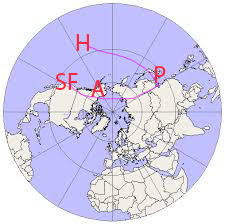Here's the quote from the New York Times article:
"Mr. Gardner said he did not necessarily favor imposing new qualifications for registering and voting, but he added that when burdens like poll taxes and literacy tests were imposed on citizens and registering often required a trip to the local courthouse, voter turnout was far higher than it is now."So who, you are asking, is Mr. Gardner?
He's the Democratic Secretary of State from New Hampshire (who is in charge of voting there) and he's on Trump's commission to investigate voter fraud.
There's lots more to this article, but lets just address this idea first.
When states had poll taxes and literacy tests (which the US Supreme Court at first ignored by ruling these issues fell under states' rights, but eventually ruled unconstitutional), a relatively few people were actually allowed to vote.
So, yes, if you count 'turnout' as the percentage of people registered to vote who actually voted, turnout was probably pretty high. But if you count the voting age population, most of whom were blocked from voting because of poll taxes and literacy tests, then actually, the turnout was dismally low.
Carol Anderson wrote in White Rage:
"1898 Williams v. MississippiGiven that Mr. Gardner is a Democrat, my question is whether he made this statement sarcastically or whether he was seriously thinking about one of the stated goals of the commission: to find out why voting turnout is so low.
"the justices approve the use of the poll tax, which requires citizens to pay a fee - under a set of very arcane, complicated rules - to vote. Although the discriminatory intent of the requirement was well known prior to the justices' ruling, the highest court in the land sanctioned this formidable barrier to the ballot box. In fact, Justice Joseph McKenna quoted extensively from the Mississippi Supreme Court's candid admission that the state convention, 'restrained by the federal Constitution from discriminating against the negor race,' opted instead to find a method that 'discriminates against its [African Americans'] characteristics' - namely poverty, illiteracy, and more poverty." (p. 36)
Anderson notes the impact of this decision.
"As late as 1942, for instance, only 3 percent of the voting-age population cast a ballot in seven poll tax states." (p. 36)" [emphasis added]
The article states that the entire New Hampshire Congressional delegation asked Mr. Gardner to resign from the commission, but he refused, asking
"whether any of the legislators had ever quit a congressional committee because they disagreed with the views of another member."I'm not sure that's a fair analogy because Congress members have an obligation to their constituents and sitting on committees is just one of their responsibilities. On the other hand, Gardner was appointed to this commission which is seen by many as a way to push the conservative goal of reconstructing obstacles to voting by black and other people of color who are likely to vote for Democrats. The leader of the committee is the Kansas secretary of state Kris Kobach who has made voter suppression a career goal.
The New Hampshire congressional delegation's request that Mr. Gardner to resign, according to the article, came about because:
"the commission’s de facto leader has warmed up for the session by suggesting that the election in November of Senator Maggie Hassan, a New Hampshire Democrat, was rigged. . .
His accusation was based on data from Mr. Gardner’s office showing that 6,540 people in New Hampshire registered to vote on Election Day using out-of-state driver’s licenses to verify their identities, but only 1,014 of the registrants later obtained a New Hampshire license.The article goes on to explain that New Hampshire law allows college students, whose homes may be out of state, to vote in New Hampshire. They can have out-of-state drivers' licenses as proof of identity. And most of the incidents where out-of-state licenses were used, were in college towns.
Mr. Kobach said that was evidence that the remaining 5,313 registrants were illegal voters from other states — enough voters, he noted, to supply the narrow margins of victory for both Ms. Hassen and Mrs. Clinton."
I'm tempted to write, "In this age of fake news . . ." but really, fake news has been part of US history from the beginning. The difference today is
- there are more 'publishers' thanks to the internet making everyone a potential publisher, who can spread fake news far and wide
- there are more 'publishers' and so there are now actually challenges to fake news and people are aware of this phenomenon, whereas in the past, if the three main network television stations or the key newspapers said something, most people didn't have access to the underlying facts that would challenge the 'news'
It's always good to go through these exercises of hearing statements and then getting to see the rest of the context of the story. It reminds us to always be asking, questioning, and then finding out the whole story.













